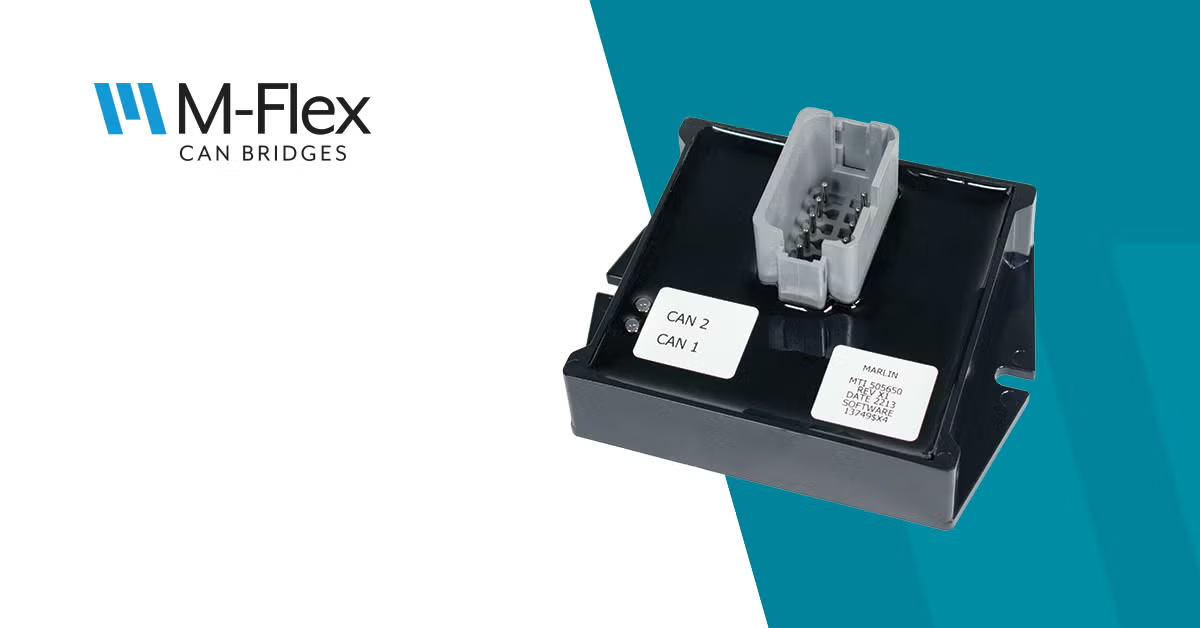Build a Bridge (a CAN bridge, that is) | M-FLEX

Everyone knows how much technology exists in the autos we drive every day. Off-road vehicles are no different – technological content increases every year. To keep all the relevant controls operating as designed, there are a lot of electronic messages to be shared between sensors, modules, control inputs, displays, etc. These messages travel via CANbus networks – and each component on that bus knows which messages to pay attention to and which ones are to be ignored.
How a CANbus Works
Vehicles often have multiple bus networks – to separate the CANbus messages that are used in the engine control area, power transmission, auxiliary equipment, etc. This allows each bus to not become overloaded with too many messages, and to separate information leading to better control decisions. Usually there is some information that needs to be shared between different CANbus networks, and that’s where a CANbridge module can be extremely useful.
Challenges When Considering a CANbus
It’s possible for different bus networks to be at different electrical potential – one might be at +24V and another could be at +72V. If a direct bridge was to be applied here, there would be significant electrical sues. Another common problem is different bus networks operating at different speeds – one at 250 buad and another at 500 baud for example. A CANbridge module needs to be able to handle any such speed differences. Further, only some information should be transmitted from bus A to bus B – and a CANbridge module can use filters to choose which messages cross the bridge and which ones do not.
CANbridge Solutions
CANbridge modules connect to multiple buses at the same time, connecting them and passing information from one bus to the other, either in one direction or in both directions. These relatively inexpensive devices provide the ability to share CANbus messages as you direct. Choosing the right hardware solution and software configuration allows you to accomplish your messaging goals.
Assuming (as in most cases) your busses are at the same electrical potential, a standard CANbridge module will be great. This module is electrically connected across both bus networks, with direct circuitry connection. If your two busses are at different electrical potential, then you will want to choose an isolated CANbridge. This solid state solution has no direct electrical connection between the two networks, so there will be no shorting from one to the other.
Both standard and isolated CANbridge modules can handle CANbus networks operating at different speeds, and these are configured in the setup of this type of module. Another significant difference between the two CANbridges is 20 filters available on the standard module, while there are 40 filters available on the isolated CANbridge module. These differences can be seen in more detail on our product page.
Results
Application of a CANbridge module focuses the CAN messages on a given bus to just those that are necessary on that bus, while including messages that originate elsewhere in a vehicle system. These innovative modules can deal with differences in speeds as well as electrical potentials, and customers can choose the CANbridge module that provides the number of message filters that suit their system.
NEED SOMETHING CUSTOM?
Marlin creates custom electronic solutions that bring OEM innovations to life—engineered to spec, built to perform in the toughest conditions.
THE MARLIN APPROACH
Marlin delivers tailored electronic solutions with a hands-on, collaborative approach—built for OEMs, tested by time, and ready to perform